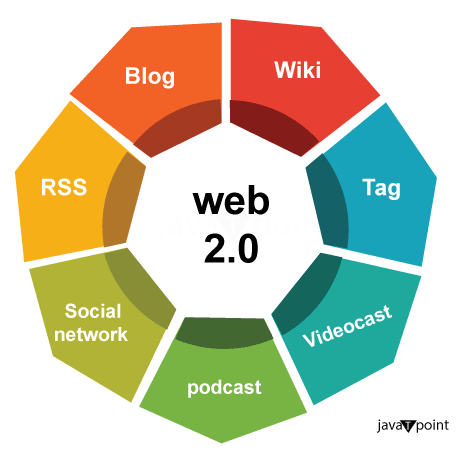Web 2.0Web 2.0 is a sequence of interactive websites emphasizing user-generated content material and allowing actual conversation and collaboration. It enables continuous platform integration and data exchange, with greater interactivity and collaboration, pervasive network connectivity, and enhanced communication channels. HistoryWeb2 or Web2 was first coined by Darcy DiNucci in 1999 and popularised by Tim O'Reilly and Dale Dougherty in 2004. It describes the shift towards more prevalent and interactive websites that overshadowed the original Web's older, more static websites. CharacteristicsWeb2 websites enable social media communication, collaboration, and user-generated content, unlike Web1-era sites that only allow passive content consumption. Popular features include social networks (like Facebook), blogs, wikis, folksonomies, video and image sharing, hosted services, Web apps, collaborative consumption, and mashups. 
What Are the Applications of Web 2.0?Web 2.0 has substantially stimulated net usage. The concept of consumer-generated content and collaboration has made the static HTML pages of Web1 appear outdated. Today, those changes in thinking about the internet are carried out in diverse methods. Software as a ServiceA lot of popular software program applications have moved to a SaaS model that may be used on exceptional devices. This consists of professional software programs like Salesforce, Microsoft, and Adobe Creative Cloud, as well as entertainment apps like Netflix, Zoom, and Spotify. SaaS is a widespread model that lets customers access net-based software program applications each time they want them, for a month-to-month subscription rate. BlogsWeb2 has revolutionized the manner personal, professional, and corporate blogs perform by enabling interactive and person-generated functions. With the help of Web2, bloggers can easily create new internet pages to proportion up-to-date statistics with their target audience. Moreover, users can like, percentage, and comment on posts to boost engagement for both non-public and commercial enterprise use. Social Media NetworksSocial media networks are the epitome of interactivity and person-generated content material implementation. They offer an easy manner for customers to proportion content material, chat with every different, and engage with new content material in actual time. Some of the maximum popular networks, such as Twitter, Instagram, Facebook, and TikTok, are many of the most visited websites. Video and Image Sharing SitesWeb2 websites like YouTube, TikTok, Google Photos, and Flickr make it clean to proportion motion pictures and images, selling multimedia interplay and converting how we speak on the net. Content Hosting ServicesOnline platforms have revolutionised information sharing and shipping. Users can publish articles and remarks on a couple of sites, growing enticing content material and lively participation. Creating Web2While Web2 is greater of an alternative in wondering than an updated version of the World Wide Web, a few key internet technologies brought this good-sized shift in how customers view and engage with internet pages. Let us see few examples of this technology and its improved compatibility:
Web1 vs Web2Web1 was the early stage of the World Wide Web's development (1989-2004), with personal websites consisting mainly of static pages. Web2 brought social networking (Myspace, Facebook) and personal blogs (Blogger, Tumblr, LiveJournal), often hosted on low-cost web hosting services. Web2 and BeyondTim Berners-Lee, the Web creator, thinks Web2 is jargon and not much different from previous web technologies. His initial goal was a collaborative platform for reading and writing. He also coined the Semantic Web (Web3) for content machines can process and understand. Impact of Web2Web2 introduced popular apps like Facebook, Twitter (now X), Reddit, TikTok, and Wikipedia, paving the way for Web3. Users can actively engage, publish content, and boost engagement across sites. Web2 is an upgraded web version that uses advanced web technologies such as Adobe Flash, Microsoft Silverlight, and JavaScript. It follows a decentralized download model like BitTorrent's. Web2 is higher than Web1 due to its understanding of user-generated content, ease of use, and interoperability.
Web3 and Web4, the subsequent variations of the net, further decorate the abilities of Web2: Web3 (Semantic Web)Web3 uses artificial intelligence and system studying to provide a more personalized net enjoyment. It enables efficient searching and information linking and integrates with the Internet of Things (IoT). Web4 (Symbiotic Web)Web 4.0 aims to create a more intelligent, intuitive, user-friendly, and easy-to-navigate web that can understand user preferences and provide personalized content and services. |
 For Videos Join Our Youtube Channel: Join Now
For Videos Join Our Youtube Channel: Join Now
Feedback
- Send your Feedback to [email protected]
Help Others, Please Share









